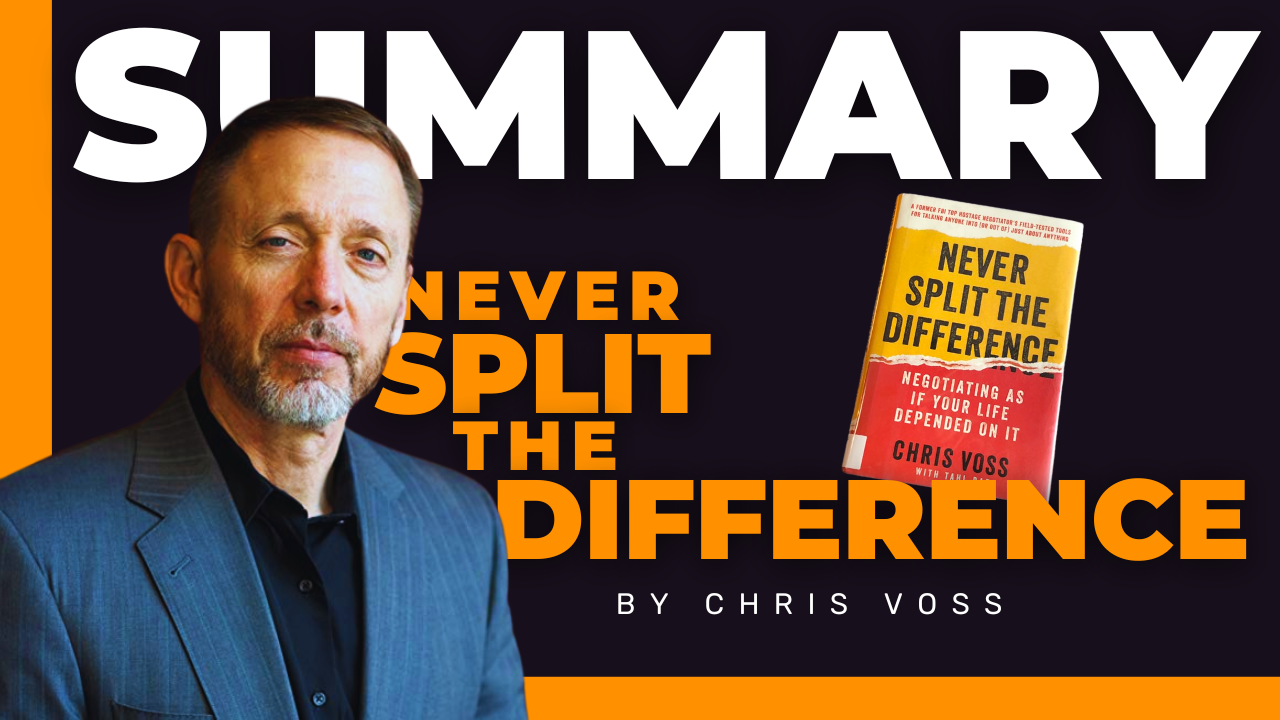Affiliate Disclaimer: Please note this blog article may contain affiliate links from various companies, such as Amazon, which means if a purchase is made using one of our links, we may receive a small commission as a result of the sale, at no additional cost to you. Thank you in advance should you choose to support our site by using one of our affiliate links!
“Never Split the Difference: Negotiating As If Your Life Depended On It” is a book written by Chris Voss, a former FBI hostage negotiator and CEO of the Black Swan Group.
The book is best suited for individuals who want to improve their negotiation skills in both personal and professional settings. It provides practical tips and techniques for effectively communicating and negotiating with others, and is particularly useful for those who want to learn how to handle difficult or high-stakes negotiations.
Here are 10 key lessons from the book and an example of how to use them in real life negotiation:
- Start with a label: Use a label to clearly and concisely define the problem at hand. For example, “We seem to be having a disagreement about the terms of the contract.”
- Mirror: Repeat the other person’s words back to them to show that you understand their perspective and to build rapport. For example, “It sounds like you’re concerned about the cost of the project.”
- Use calibrated questions: Ask open-ended, non-threatening questions to gather information and better understand the other person’s needs and motivations. For example, “Can you tell me more about why this is important to you?”
- Emphasize the “what” over the “why”: Focus on the specific actions or outcomes that you both want rather than getting bogged down in the reasons behind them. For example, “What would it take for us to reach an agreement on this?”
- Find the “black swan”: Look for the unexpected or unconventional solution that addresses both parties’ needs. For example, “What if we split the difference on the price and add in some additional support services?”
- Use tactical empathy: Show genuine interest in the other person’s perspective and emotions, and use this understanding to your advantage. For example, “I can see that this is a difficult decision for you. How can I help make it easier?”
- Use the “broken record” technique: Persistently and calmly repeat your main points in a non-confrontational way. For example, “I understand your concerns, but I believe that my offer is fair and reasonable based on the market value of similar products.”
- Use silence to your advantage: Allow for silence in the conversation to create a sense of discomfort and encourage the other person to fill the void. For example, after making an offer, remain quiet and allow the other person time to think and respond.
- Use the “late close”: End the negotiation with a strong and confident final offer, rather than making multiple counteroffers. For example, “This is my final offer. I believe it is a fair and reasonable compromise, and I hope we can move forward with it.”
- Always be prepared to walk away: Know your bottom line and be willing to walk away from the negotiation if necessary. For example, “I value our relationship, but I also need to protect my company’s interests. If we can’t reach a mutually beneficial agreement, I’m afraid we’ll have to part ways.”
By using these negotiation techniques, you can effectively communicate and reach mutually beneficial agreements with others.
Get it on Amazon below:






